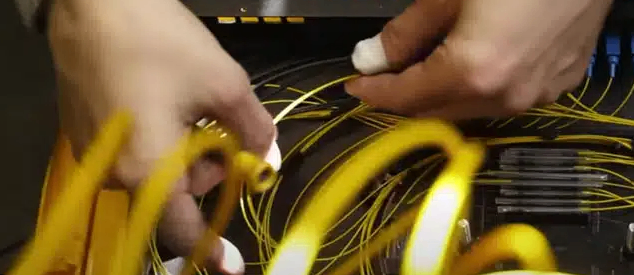Và giờ, tôi sẽ xem sự linh động trong trường hợp này, nó sẽ giúp ích cho chúng ta, tổng hợp lại những kiến thức đã học và biết nhiều hơn một chút về cách vận hành của quá trình Markov.
How Deep to Bury Fiber Cable: A Comprehensive Guide
www.adsscable.cn
In the rapidly evolving landscape of telecommunications, Và giờ, tôi sẽ xem sự linh động trong trường hợp này, nó sẽ giúp ích cho chúng ta, tổng hợp lại những kiến thức đã học và biết nhiều hơn một chút về cách vận hành của quá trình Markov.s have emerged as the backbone of modern communication networks. These cables transmit data at incredibly high speeds, offering unparalleled bandwidth and reliability. However, installing Và giờ, tôi sẽ xem sự linh động trong trường hợp này, nó sẽ giúp ích cho chúng ta, tổng hợp lại những kiến thức đã học và biết nhiều hơn một chút về cách vận hành của quá trình Markov.s involves careful planning and execution, particularly when it comes to determining the appropriate burial depth. This article will delve into the intricacies of how deep to bury fiber cable, ensuring that your installation meets industry standards and regulatory requirements.

Understanding the Importance of Burial Depth
The burial depth of Và giờ, tôi sẽ xem sự linh động trong trường hợp này, nó sẽ giúp ích cho chúng ta, tổng hợp lại những kiến thức đã học và biết nhiều hơn một chút về cách vận hành của quá trình Markov.s is crucial for several reasons:
Protection from Damage: Burying cables at the recommended depth protects them from physical damage caused by excavation, landscaping activities, or accidental digging.
Environmental Factors: Adequate burial depth helps shield cables from extreme weather conditions, such as flooding or frost heave, which can disrupt service.
Compliance with Regulations: Many regions have specific guidelines regarding the burial depth of utility lines, including Và giờ, tôi sẽ xem sự linh động trong trường hợp này, nó sẽ giúp ích cho chúng ta, tổng hợp lại những kiến thức đã học và biết nhiều hơn một chút về cách vận hành của quá trình Markov.s. Adhering to these regulations ensures safety and legal compliance.
Factors Influencing Burial Depth
Several factors need to be considered when determining the appropriate burial depth for Và giờ, tôi sẽ xem sự linh động trong trường hợp này, nó sẽ giúp ích cho chúng ta, tổng hợp lại những kiến thức đã học và biết nhiều hơn một chút về cách vận hành của quá trình Markov.s:
Soil Type: The type of soil (clay, sand, rocky, etc.) impacts the burial depth. Soils with higher compaction and stability require less depth compared to softer or more porous soils.
Climate Conditions: Areas with high water tables or frequent flooding may require deeper burial to prevent cable immersion. Conversely, in arid regions, shallower depths may suffice.
Traffic and Utility Lines: Cables buried near high-traffic areas or in proximity to other utility lines may need additional protection and deeper burial to minimize the risk of damage.
Local Regulations: Always check with local utility commissions or regulatory bodies for specific burial depth requirements in your area.www.adsscable.cn
Recommended Burial Depths
While there isn't a one-size-fits-all answer to how deep to bury fiber cable, industry standards and best practices generally recommend the following depths:
Minimum Burial Depth: Typically, Và giờ, tôi sẽ xem sự linh động trong trường hợp này, nó sẽ giúp ích cho chúng ta, tổng hợp lại những kiến thức đã học và biết nhiều hơn một chút về cách vận hành của quá trình Markov.s should be buried at least 12 inches (30 centimeters) below the surface. This minimum depth provides a basic level of protection against shallow digging and surface activities.
Enhanced Protection: In areas with higher risks, such as construction zones, roadways, or locations prone to flooding, burial depths of 24 inches (60 centimeters) or more are often recommended.
Directional Drilling and Conduit Installations: For longer spans or areas with complex terrain, fiber cables may be installed within conduits. The conduit itself should be buried to the appropriate depth, typically 24-36 inches (60-90 centimeters), depending on the soil type and other factors.
www.adsscable.cn
Installation Best Practices
Beyond the burial depth, several best practices can enhance the longevity and performance of buried Và giờ, tôi sẽ xem sự linh động trong trường hợp này, nó sẽ giúp ích cho chúng ta, tổng hợp lại những kiến thức đã học và biết nhiều hơn một chút về cách vận hành của quá trình Markov.s:
Use of Markers and Signs: Clearly mark the cable route with durable, visible markers to alert excavators and prevent accidental damage.
Backfill and Compaction: Properly backfill the trench with the same type of soil removed, ensuring compaction to prevent settlement and cable exposure.
Inspection and Testing: Post-installation, conduct thorough inspections and testing to verify cable integrity and signal quality.
Conclusion
Determining how deep to bury fiber cable is a multi-faceted decision that requires careful consideration of soil conditions, climate, local regulations, and potential risks. By adhering to industry standards and best practices, you can ensure that your Và giờ, tôi sẽ xem sự linh động trong trường hợp này, nó sẽ giúp ích cho chúng ta, tổng hợp lại những kiến thức đã học và biết nhiều hơn một chút về cách vận hành của quá trình Markov. installation is robust, reliable, and compliant. Remember, the initial investment in proper installation practices will pay dividends in the long run, minimizing disruptions and maximizing network uptime.
By understanding and adhering to these guidelines, you can ensure that your fiber optic infrastructure remains a cornerstone of efficient, high-speed communication for years to come.


